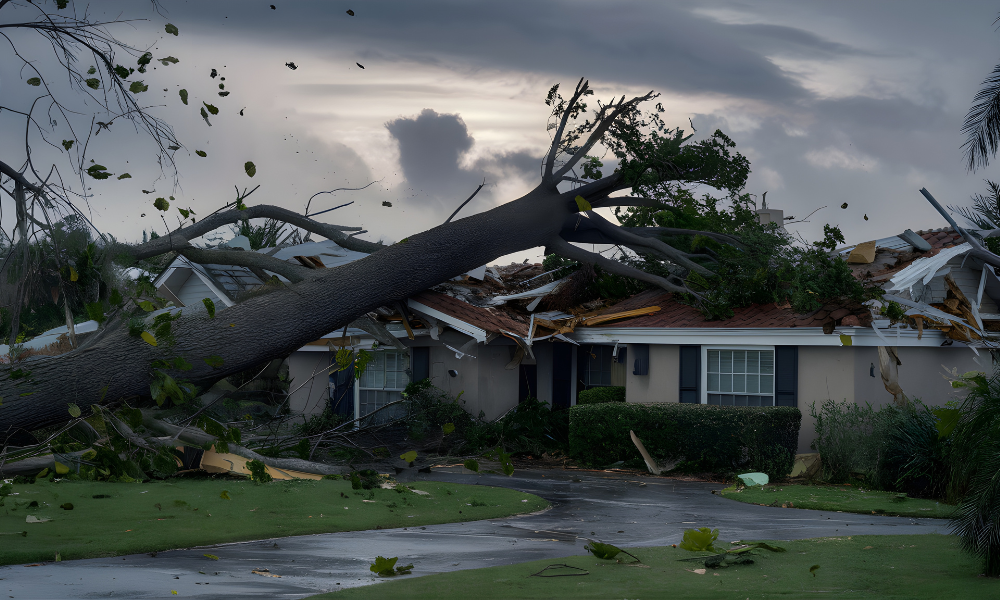Hurricane period shows CRE lenders the cost of climate risk

Lenders are facing heightened financial risks as hurricanes and other climate-driven events increasingly affect commercial real estate (CRE) holdings, according to a new report by Moody’s.
Using Hurricane Milton as a case study, Moody’s highlighted how climate-related events are impacting not only properties but also the stability of lending portfolios, challenging banks to better anticipate and manage the financial fallout of such disasters.
“Hurricanes and other climate-related events can cause direct damage to people and properties while also causing widespread disruption to economies and communities,” the report read. “The associated implications for a bank’s lending portfolio are complicated, driven by a range of factors, including damage from the storm, loan characteristics, and insurance coverage, among others.”
For lenders, the financial impact of these events depends on factors ranging from the extent of storm damage to specific loan terms and the levels of insurance coverage in place.
Lessons from Hurricane Milton
Before Hurricane Milton’s landfall in the US, Moody’s estimated that more than 235,000 CRE properties worth about $1.1 trillion were at risk of being impacted by high-speed winds. Post-storm data showed that approximately 100,000 properties experienced structural damage, amounting to around $400 billion in estimated value.
However, despite widespread property damage, Moody’s reported that only a small percentage of the overall portfolio saw significant damage. This suggests that while many properties remain vulnerable, the majority are protected by insurance, helping to mitigate credit risks to some degree.
Rising insurance costs
An ongoing concern for lenders is the changing landscape of insurance, which Moody’s said is becoming costlier and more difficult to secure.
For borrowers, increasing insurance premiums and higher deductibles often translate to additional financial strain, which can impact their ability to meet mortgage payments. This trend has led to a rise in “force-placed insurance,” where lenders provide coverage on behalf of borrowers who can’t meet their insurance obligations. While this protects the lender’s interests, force-placed insurance is more expensive and places further pressure on borrowers’ cash flow.
Insurance premiums for CRE properties have risen dramatically in recent years, and the report showed that insurance now consumes a growing share of rental income for many properties.
For properties facing the highest insurance costs, premium expenses accounted for 13.4% of revenue in 2023, nearly double the 6.7% share recorded in 2018. To maintain profitability, these properties need to achieve around 1.3% annual rent growth, a challenging target in many markets.
As climate events continue to impact real estate markets, Moody’s recommended that lenders develop more proactive risk management strategies. This could include using detailed catastrophe models to identify properties at greater risk of damage and working with borrowers to adjust loan terms in line with current and future climate-related risks.
Read next: Commercial real estate lending surges in Q3
Insights gained from post-storm analyses like that of Hurricane Milton could also be critical in refining portfolio strategies and ensuring they are prepared for future hurricane seasons.
“Using post-event analytics and detailed catastrophe models that show what a property could lose during other storms allows banks to identify imminent insurance challenges stemming from the latest hurricane season while also knowing which loans to monitor ahead of future hurricane seasons,” Moody’s wrote in the report.
Stay updated with the freshest mortgage news. Get exclusive interviews, breaking news, and industry events in your inbox, and always be the first to know by subscribing to our FREE daily newsletter.



